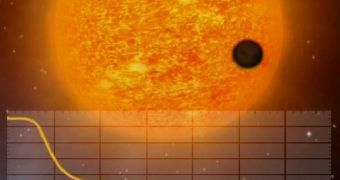Experts studying the Sun observed some time ago that, by analyzing oscillations and variations in the surface of the star, they could gain more insight into its interior. Thus the field of helioseismology appeared. Literally translated from Latin, the word means knowledge of quakes on the Sun. As it became increasingly clearer that the analysis method was yielding correct results, astrophysicists started translating it to study other stars as well, in order to obtain the same amount of data, AlphaGalileo reports. However, a new array of scientific instruments is needed to make this possible.
The difference between the two types of observations is that, while the Sun covers a large portion of the sky, and is very close to the Earth, other stars are tens to billions of light-years away, which means that they appear as tiny speckles of light in the instruments used for solar and stellar seismology. On account of this distance, the slight changes in oscillations that dictate the brightness fluctuations these stars exhibit are hidden from us, so the technique is useless. The key to solving this is basically installing new arrays of highly sensitive instruments on space-based satellites, and aiming them in the correct direction.
“It is still not possible to obtain a high resolution image of a star's disc. This means that we can only see waves that are propagated across the whole of the star (in contrast to what we can see on the Sun),” University of Birmingham expert William Chaplin said at the 4th International HELAS Conference. He highlights the fact that improvements in this type of seismology make it a lot easier for the mass, radio signature and age of stars to be determined with higher degrees of accuracy than possible with other, non-seismology analysis methods.
“It is now becoming possible to obtain images of the surface of large relatively near stars. In 20 or 30 years the technology will make it possible to observe these stars in as much detail as we can observe our Sun today. Whether this will happen during my working life is unclear,” Chaplin added. The natural vibration of stars, and the variations that appear within when an exoplanet passes between the Earth and that celestial body, are the targets of existing observatories, such as CoRoT (COnvection ROtation and planetary Transits), and Kepler, and will also constitute the target for upcoming missions, such as PLATO (PLAnetary Transits and Oscillations of stars).

 14 DAY TRIAL //
14 DAY TRIAL //